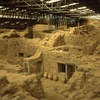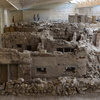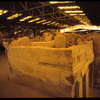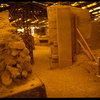Excavations Akrotiri
-
ARCHAEOLOGICAL SITE OF AKROTIRI
It is one of the most important prehistoric settlements of the Aegean. The first habitation at the site dates from the Late Neolithic times (at least the 4th millennium B.C.). During the Early Bronze Age (3rd millennium B.C.), a sizeable settlement was founded and in the Middle and early Late Bronze Age (ca. 20th-17th centuries B.C.) it was extended and gradually developed into one of the main urban centers and ports of the Aegean. The large extent of the settlement (ca. 20 hectares), the elaborate drainage system, the sophisticated multi-storeyed buildings with the magnificent wall-paintings, furniture and vessels, show its great development and prosperity. The various imported objects found in the buildings indicate the wide network of its external relations.
Akrotiri was in contact with Crete but also communicated with the Greek Mainland, the Dodecanese, Cyprus, Syria and Egypt. The town's life came to an abrupt end in the last quarter of the 17th century B.C. when the inhabitants were obliged to abandon it as a result of severe earthquakes. The eruption followed. The volcanic materials covered the entire island and the town itself. These materials, however, have protected up to date the buildings and their contents, just like in Pompeii. Evidence of habitation at Akrotiri first came to light in the second half of the 19th century.
However, systematic excavations were begun much later, in 1967, by Professor Spyridon Marinatos under the auspices of the Archaeological Society at Athens. He decided to excavate at Akrotiri in the hope of verifying an old theory of his, published in the 1930's, that the eruption of the Thira volcano was responsible for the collapse of the Minoan civilization. Since his death in 1974, the excavations have been continued under the successful direction of Professor Christos Doumas.






